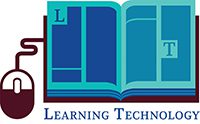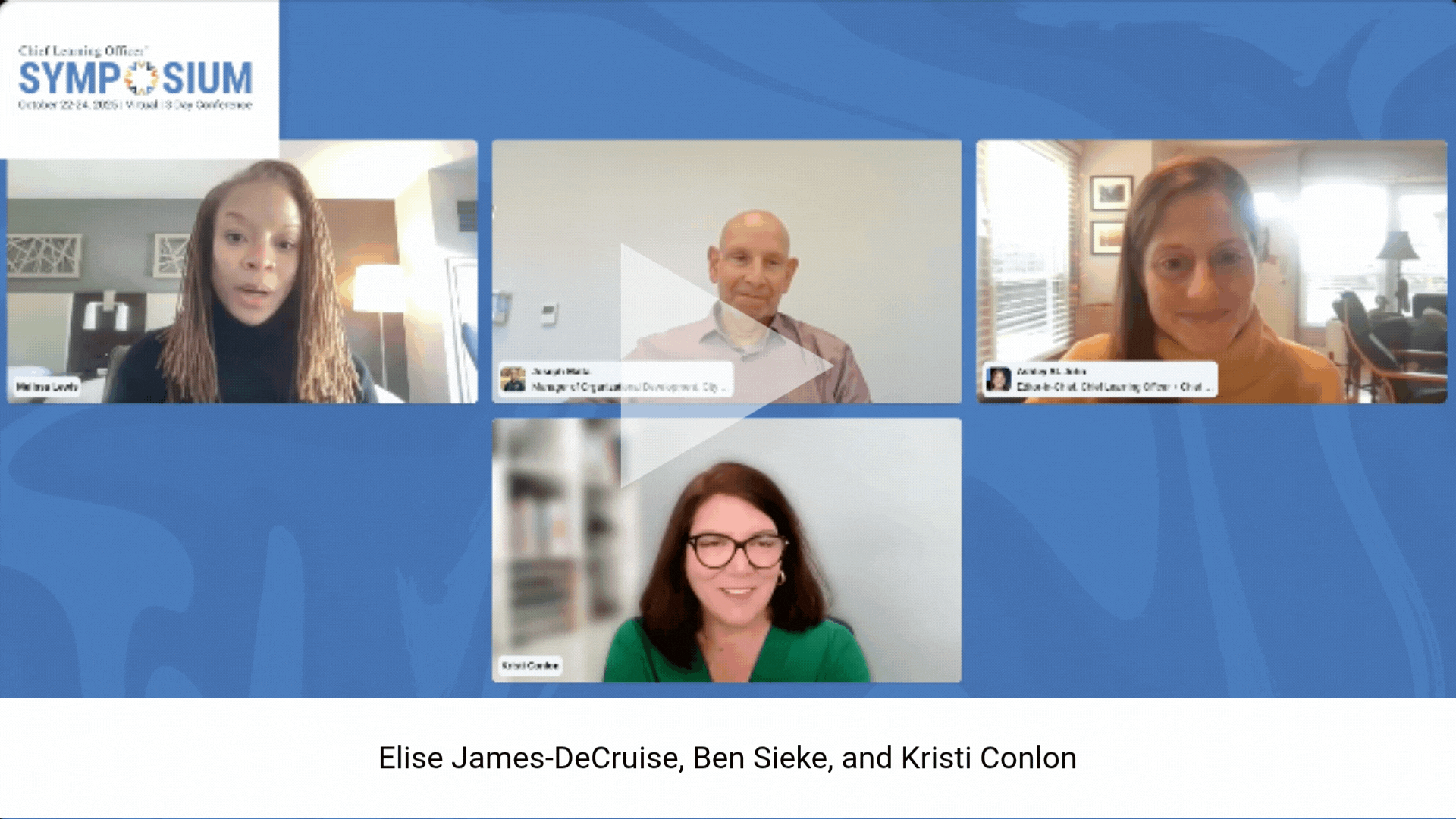 These are heady days for learning leaders. Executives rely on them to rapidly build employee’s skills, and vendors offer an array of dazzling new learning technologies that promise to make employees better, faster and more engaged at work. But CLOs need to be thoughtful about the tools they choose to ensure they deliver business results.
These are heady days for learning leaders. Executives rely on them to rapidly build employee’s skills, and vendors offer an array of dazzling new learning technologies that promise to make employees better, faster and more engaged at work. But CLOs need to be thoughtful about the tools they choose to ensure they deliver business results.
“Technology is an enabler not a solution,” said Dani Johnson, vice president of learning and development research for Bersin by Deloitte, Deloitte Consulting, the human resources advisory and research firm. Too often companies decide they need a new learning management system or invest in a new content development platform without first figuring out what business purpose it will serve — and whether learners will even use it. That is a mistake. “It doesn’t matter how great the technology is, if learners won’t use it, it does no one any good,” Johnson said.
 Technology is a key piece in a learning strategy, but mistakes can be costly; learning must come first. According to Deloitte’s 2016 “Global Human Capital Trends” report, 84 percent of executives said learning is an important (40 percent) or very important (44 percent) issue. Yet many learning leaders struggle with outdated platforms and static learning approaches, suggesting a need for better technology-enabled learning solutions.
Technology is a key piece in a learning strategy, but mistakes can be costly; learning must come first. According to Deloitte’s 2016 “Global Human Capital Trends” report, 84 percent of executives said learning is an important (40 percent) or very important (44 percent) issue. Yet many learning leaders struggle with outdated platforms and static learning approaches, suggesting a need for better technology-enabled learning solutions.
The technology sector is responding by rolling out dozens of new tools and platforms that promise to make learning easier, more engaging and more accessible to finicky learners. In 2015 alone, more than $6.54 billion in investments were made in new learning technologies, which is up dramatically from previous records of $2.42 billion in 2014 and $1.64 billion in 2013. That is great news for learning leaders who are ready to upgrade their out of date systems. But before spending a dime, they have to ask themselves: will any of it make employees better at their jobs?
The answer isn’t always yes, said Ray Wang, founder and principal analyst for Silicon Valley-based Constellation Research. “Few new learning solutions address the real issue of how learners want to learn,” he said. Learning leaders have to resist the lure of what’s trendy to ensure their investments drive actual business outcomes that lead to a measurable ROI. Taking a business-driven approach to learning technology will prevent learning leaders from investing in expensive but not terribly useful solutions — if they make the time up-front to determine what learning is needed, and what will entice employees to engage with learning content. “Decide what the ideal learning looks like, and be open to new types of content and learning styles,” Wang said.
Chief Content Curator
One of the key trends in learning technology today is to offer constant access to small bits of content that meet learner’s just-in-time needs. This is especially true among millennial employees, who now make up more than half of the workforce and have grown up getting immediate answers to any question by asking Siri or watching YouTube videos. This has created a different learning environment from 10 years ago, when all of the information an employee needed came from the learning and development department, Johnson said.
Fortunately, it can be relatively easy and low cost to enable organic information-sharing by providing employees with GoPro cameras, or encouraging them to use their smartphones to capture best practices on the job that can be shared with colleagues. Employee-generated content has become a valuable addition to the learning tools repository, but learning leaders need to figure out how to mold it into a manageable content database that can be vetted and accessed by the right people at the right time.
“Now the CLO’s job is less about what content to create, and more about how to curate that content and make it easily available,” Johnson said. The ability to generate content immediately may require vetting and cataloging thousands of pieces of training. “No one has a handle yet on how to make this happen.”
Vendors like Degreed and Curatr are attempting to ease this transition with a variety of tools and system features. These companies also offer content curation as part of their learning management systems. Similarly, Workday recently rolled out Workday Learning, an application that offers employees learning and career development suggestions based on their jobs and past learning experiences; and Skillsoft is now offering a version of SumTotal’s Talent Expansion suite to create tighter integration between content and the talent management platforms to personalize learning.
These are early generation tools though, and not all of them will be as intuitive and flexible as customers would like, Johnson said. “The vendors who build their systems around content usability and accessibility are doing the best job.”
She also said that CLOs can’t rely on these platforms to do all of the work — even if they are easy to use. Learning leaders have to take a hard look at their content; weed out anything irrelevant, dated or that does not support current strategic goals.
Learning leaders also need to determine how to make the remaining content searchable and easy to access so learners come to a particular platform first for answers, said Steve Paul, learning product manager for SilkRoad. “Ease of use and shareability is very important to this generation.”
Content also has to be relevant. For instance, Paul said many companies are pushing for mobile-enabled content as the next big thing, which is a great idea — if content and formats meet mobile learner’s needs. Giving workers in the field a quick checklist or short video to help them do their jobs is valuable, but offering an hours-long leadership training seminar via a smartphone is unlikely to be used. “Customers have a lot of expectations that mobile will solve all of their problems, but it is not always the case.”
The Quest for Metrics
To avoid making costly technology mistakes, many customers are looking for better analytics and metrics to help them assess learning impact. Tying learning metrics to business performance is vital to learning program success. It is also a key characteristic of “talent-driven organizations,” according to Sierra-Cedar’s 2015-16 “HR Systems Survey.” Talent-driven organizations are 1½ times more likely to report learning metrics than non-talent-driven organizations; they achieve higher than average levels of return on equity, generate 1.4 times the revenue per employee, and have a higher profit per employee than non-talent-driven organizations. The report suggests the companies achieve these results because they focus on employee outcomes, and how learning and talent development supports those goals.
Customers don’t just want whiz-bang dashboards telling them who took what training, though that is a good first step, Paul said. “What they really want is data that will give them true prescriptive analytics to understand where they need to make changes.”
That may still be a lofty goal, but vendors like SilkRoad are moving in that direction by making it easier to ask questions and run algorithms on existing talent data, though he notes that this aspect of learning technology still has a long way to go. “Organizations already hold a lot of employee data, but they still struggle to analyze it in a way that tells them what drives performance.”
Axonify is attempting to address many of these challenges by offering client’s employees daily three-minute learning nuggets, in which they answer questions while engaging in a gaming environment. Based on their responses, the system customizes content for the next day. The technology is based on learning theory that people are better able to retain information when they are introduced to it at random points over time, said Axonify CEO Carol Leaman. These kinds of tools address several key challenges for learning leaders — they provide learning in small chunks, make it easily accessible, and provide key metrics to demonstrate business results.
“We had a theory that it would work and it did, like crazy,” she said. After implementing the program at Pep Boys to address accidents and theft on the job, the specialty auto retailer recorded 40 percent fewer safety incidents and a 55 percent decrease in inventory shrink in the shops that use the training.
Southeastern Grocers in Jacksonville, Florida, saw similar results when the retail grocer implemented Axonify to measure its employees’ knowledge. “It is a micro-learning tool that helps us measure what people know,” said Rebecca Sinclair, former CHRO for Southeastern Grocers, and current consultant with Perceptive Management consulting in Ponte Vedra Beach, Florida. She said it fit nicely with the company’s broader learning strategy and addressed the need for quick bits of training for young staffers. Though “it doesn’t take away from the need for coaching, mentoring and other forms of knowledge sharing,” she said. “The technology just helps us to be smarter and faster.”
That is good advice for all learning leaders who are embarking on a technology purchase: “Don’t start with the system, start with where you want to go,” Deloitte’s Johnson said. “You need to know what your goals are before you can choose technology that will get you get there.”
Sarah Fister Gale is a writer based in Chicago. Comment below, or email editor@CLOmedia.com.















